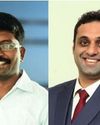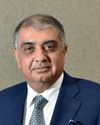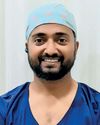
Video-Assisted Thoracoscopic Surgery (VATS) is a minimally invasive surgical technique used to diagnose and treat diseases of the chest. Unlike traditional open surgery, VATS involves making small incisions through which a thoracoscope and surgical instruments are inserted. This approach provides a magnified view of the chest cavity, allowing surgeons to perform complex procedures with greater precision and minimal trauma to the patient.
VATS is employed to treat a range of thoracic conditions, including lung cancer (for lobectomies and segmentectomies), thymus gland tumors (thymomas, and thymic carcinomas), pleural diseases (such as pleural effusions, empyema, and pleural thickening), and pneumothorax (for treatment and prevention). It is also used for esophageal disorders (including esophagectomy for esophageal cancer) and to obtain biopsies from the lung, pleura, or mediastinum.
UNDERSTANDING VATS SURGERY WITH AN EXAMPLE
A patient presented with a massive thymus tumor measuring 12-15 cm. This tumor size is exceptionally large for thymus tumors, which are rare to begin with. Typically, large thymus tumors are associated with Myasthenia Gravis, a condition characterized by muscle weakness and drooping eyelids. However, this patient exhibited only generalized, non-specific symptoms such as chest pain and breathlessness, without any signs of Myasthenia Gravis.
This story is from the August 2024 edition of Healthcare Radius.
Start your 7-day Magzter GOLD free trial to access thousands of curated premium stories, and 9,000+ magazines and newspapers.
Already a subscriber ? Sign In
This story is from the August 2024 edition of Healthcare Radius.
Start your 7-day Magzter GOLD free trial to access thousands of curated premium stories, and 9,000+ magazines and newspapers.
Already a subscriber? Sign In

SpOvum launches Al-powered platform to boost patient support in assisted reproductive technology
The platform offers personalized information based on individual ART-related concerns, drawing from reliable, indexed medical guides to provide fact-based, tailored answers.

Hearzap launches Al-powered Philips HearLink 50 miniRITE
The company is projected to expand across 250 stores by 2026 and envisions accessible and affordable hearing care across the country.

Red.Health launches Al-driven medical emergency platform
In medical emergencies, every second matters but the current emergency medical systems face many challenges

OmniActive acquires ENovate Biolife
The company aims to double its top line, targeting Rs 2,000 crores within the next 5 to 6 years from the present Rs 1,000 crores.

5-year-old fish bone removed from 61-year-old's abdomen
The patient had previously undergone an endoscopic procedure five years ago at another hospital to remove a fishbone, but the current one had likely been missed at that time.

Large brain aneurysm treated using advanced stenting method
Aneurysm is a bulge or ballooning in a blood vessel of the brain. It’s often described as looking like a berry hanging on a stem.

37-year-old pregnant woman treated for aggressive breast cancer
Given the complexity of her condition, the team worked closely to develop a treatment plan that would balance the needs of both mother and babies.

45-year-old treated with robotic-assisted hernia surgery
This surgery marks a significant milestone for Park Hospital, which has successfully completed 50 robotic-assisted procedures.

Healthium Medtech, Healthcare Sector Skill Council (HSSC) sign MoU to boost skill development in Indian healthcare
Healthium and HSSC will collaborate to deliver training programs aimed at skilling, reskilling and upskilling healthcare workers, enabling them to address evolving challenges in the field.

Advanced ambulance fleet launched for Maharashtra's emergency services
The announcement comes amid ongoing bilateral meetings between Prime Minister Narendra Modi and Prime Minister Pedro Sanchéz Perez Castejon of Spain.